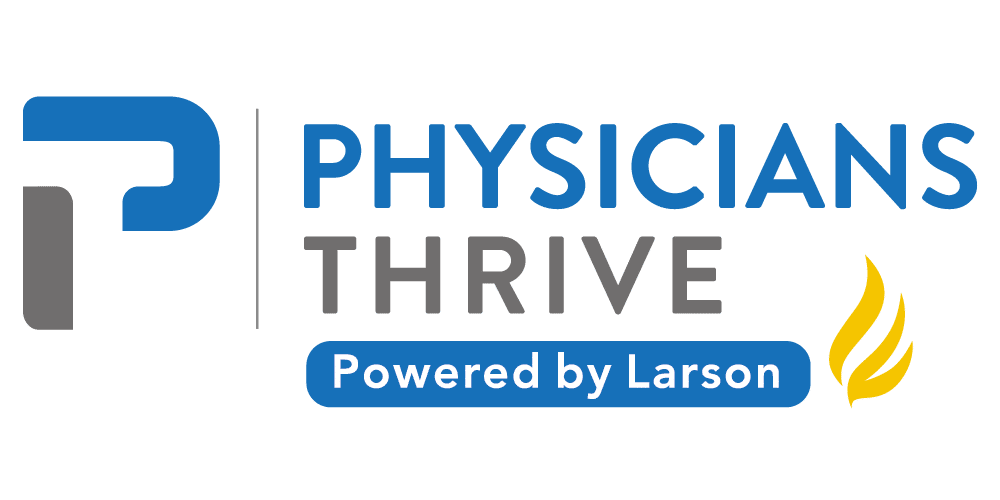A physician’s busy schedule doesn’t slow down for tax season, and most doctors don’t have time to sift through every potential write-off or tax credit to save money. As a result, doctors usually pay significantly more in taxes than others in the same income bracket.
Even with high average salaries, doctors still have to plan carefully to account for the cost of student loan repayments and costly insurance premiums. Taking advantage of valuable tax breaks is an important way that physicians can conserve their money and plan for the future.
Here is a breakdown of five of the easiest ways for doctors to lower their effective tax rates:
Table of Contents
Employer-Sponsored Retirement Plans
You can reduce your taxable income by putting more money into your employer-sponsored retirement plan, such as a 403(b), 457(b), or most commonly, a 401(k).
All 401(k) contributions are deducted from your income before tax. Therefore, by increasing your contribution amount, you can both bolster your retirement savings and reduce your taxable income.
You may contribute a maximum $19,500 per year to your 401(k), or $26,000 if you are age 50 or older.
In addition to reducing your taxed income, 401(k) accounts earn tax-free interest.
Usually, you can easily adjust the 401(k) contribution taken out of your paycheck by logging into your retirement account. By increasing the percentage or dollar amount of your contribution, you put more money towards your future and save on taxes now.
When it comes time to pull money out of a 401(k), the withdrawals are taxable
A financial advisor can work with you to determine the most strategic times to withdraw funds in order to minimize your effective tax rate.
One important caveat: If you take money out of your 401(k) before the age of 59 ½, you will pay a 10% early withdrawal penalty.
While other types of an employer-sponsored retirement plans may have slightly different restrictions and contribution maximums, generally these accounts receive the same tax treatment and benefits.
Related: Your Comprehensive Review of the ADP 401k
Traditional IRA
There are many prevalent misconceptions about the use of Individual Retirement Account (IRA) contributions to lower your taxes, and as a result many taxpayers are missing out on a crucial opportunity to save.
A 2018 study found that three out of four Americans mistakenly think that it is illegal to open an IRA after the year’s end in order to decrease taxable income. In actuality, traditional IRA contributions are a perfectly legal and legitimate way to reduce the amount of income that you pay taxes on.
When you put money into a traditional IRA, the contribution amount can reduce your taxable income.
For example, if a doctor’s earnings put her in the 35% marginal tax bracket, and she contributes $5,500 to her traditional IRA, she will save up to $1,925 based on the 2018 tax rate.
For the tax year 2019, the maximum annual IRA contribution is $6,000 (or $7,000 if you’re over the age of 50). More good news if you’re trying to save on taxes at the last minute: you can contribute to or open an IRA until tax-filing day in mid-April if you qualify for a deductible IRA.
“Wait, but what about a Roth IRA?”
The biggest difference between traditional IRAs and Roth IRAs is when the money is taxed.
Traditional IRA contributions are tax-deductible, but the withdrawals are taxed when the money is taken out, usually during retirement. Conversely, contributions to a Roth IRA do not lower your taxable income in the year your contributions are made, but you can make tax-free withdrawals during retirement.
To choose the best option, assess whether you’re more likely to have a higher tax rate at the time of contribution or at the time of withdrawal, and opt to take your tax break then.
It’s good to have both a current tax reduction strategy as well and a future focused tax reduction strategy. (Also, you can convert a traditional IRA into a Roth IRA in any given year and pay taxes based on your income at that time.)
Health Savings Account
Meet the triple threat of tax breaks: Health Savings Accounts, or HSAs. Health insurance companies typically offer HSAs to individuals with high-deductible plans.
HSAs allow you to save for medical expenses, and offer three major perks when it comes to tax season:
- Tax deductible contributions. Reduce your overall taxable income by putting money into an HSA. For 2019, annual HSA contributions are capped at $3,500 for an individual and $7,000 for a family. You may also be able to make pre-tax HSA contributions through your employer’s payroll, similar to a 401k.
- Tax-free withdrawals for qualifying medical expenses. Not only can you avoid paying taxes on the initial contributions to your HSA, you also don’t have to pay taxes on the withdrawals when you take money out for approved expenses. Using a linked debit card or check, you can pay for deductibles, copays, coinsurance, and other qualified medical expenses using the funds from your HSA account.
- Tax-free interest. Unlike money sitting in your bank account, the money in your HSA can accrue interest and grow without being subject to taxes.
If three different ways to save on taxes aren’t enough, there’s one more serious perk to opening an HSA.
Unlike Flexible Spending Accounts (FSAs), HSA funds roll over at the end of the year, so no matter how much you contribute, you’ll never lose the money you’ve invested.
The biggest stipulation to note with HSAs is that you cannot qualify for a Health Savings Account if you have any other health coverage except a high-deductible plan.
You can take this quick quiz to determine if you are eligible for an HSA.
If you do qualify, you’ll be able to take advantage of an exceptional opportunity to lower your medical expenses, reduce your taxable income, and save for your future.
529 College Savings Plans
A 529 plan is a college savings plan that comes with substantial tax benefits.
When you take out money from a 529 to pay for college, the withdrawals are tax-free. The interest accrued on funds within the account are also tax-free. You also don’t have wait until the kids are in college to use a 529 for tuition costs; you can withdraw up to $10,000 tax-free each year from a 529 account to pay for private, public, or religious elementary and secondary schools as well.
Unlike HSA contributions, 529 contributions are not deductible from your federal taxes.
However, there are many opportunities for tax breaks at the state level: more than half the states offer at least some tax credit or deduction for 529 contributions.
529 plans don’t place limits on income, age, or yearly contributions, and the account holder retains control of the 529 even when the beneficiary reaches the legal age of adulthood.
If saving for tuition is part of your financial planning, a 529 plan is a flexible, low-maintenance option that offers serious tax perks.
Charitable Gifts
Donating to a charitable organization is one of the most well-known opportunities for a tax write-off.
When you donate money or property to a qualified charitable organizations, you may be able to deduct your gift from your income tax if you itemize deductions. In order to take advantage of a charitable deduction, you must itemize your deductions when you do your taxes.
If the total of your itemized deductions is not greater than the standard deduction, it is better to opt for the standard deduction amount.
Charitable deductions are only allowed when the recipient of your gift is a qualified charitable organization. Gifts to individuals and certain types of organizations do not qualify for deductions.
To make sure an organization is approved, look for the 501(c)(3) label after the group’s name or look it up in the IRS online database.
It’s also important to keep documentation of your contributions. For monetary gifts, be sure to keep a credit card statement, a canceled check, bank statement or a written note acknowledging the donation from the charity.
If you’re donating property such as furniture, clothes, or other goods, make sure to get a qualified appraisal for the value of the donation.
Careful record-keeping is key to making sure you can take advantage of the opportunity to deduct charitable gifts from your taxable income.
In summary
Saving on taxes doesn’t have to be a headache. With a little bit of planning, doctors can save for medical costs, college tuition, or retirement, while reducing their taxable income at the same time.
Contributions to 401(k)s, traditional IRAs, 529s, and HSAs are among most efficient ways to get an immediate tax break, but they are no substitute for long-term financial planning.
As you plan for retirement, you should talk to your advisor about options like Roth IRAs and private pensions to maximize your overall tax savings.
To learn more about saving on taxes now and planning for your financial future, schedule a time to talk with an advisor.
Get Physician Specific Financial Planning
Work with advisors that know physicians.
Get Financial Planning
Need help with something else?
Get Free Disability Insurance Quotes
Get Your Contract Reviewed
Subscribe to our email newsletter for expert tips about finances, insurance, employment contracts, and more!








































